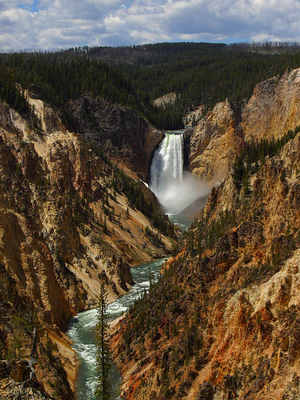The African civet, civettictis civetta, is considered the largest civet in Africa. Their bodies measure 17 to 33 inches (43 to 83.8 centimeters), with their tails essentially measuring the same length, effectively doubling their size. They can weigh anywhere from 3 to 37 pounds (1.4 to 17 kilograms) depending on age. Despite its cat-like appearance, an African civet is more closely related to both mongooses and (of course) other civets (like the Malayan and masked palm civet). They have distinct black and white markings along their bodies as well as a black band around their eyes. Their hind legs are also much longer than their front legs. The feet have 5 toes with non-retractable claws on each to better help them scale trees more easily. Not only are they adept at climbing, but they are also capable swimmers in their own right.
The African civet can be found from coast to coast across sub-Saharan Africa. They will often inhabit tropical forests and jungles, but can make due with any environment that has a permanent water supply and tall grasses to hide in. Being nocturnal, they will spend the day resting (often in trees, but sometimes on the ground as well) and do their hunting at night. This animal is solitary and very territorial, marking its boundaries with a scent that is released by its perineal glands.
The diet of an African civet consists of both animal and plant matter such as lizards, snakes, rodents, insects, berries and fallen fruit. Using tall grass as cover, they will sneak up on their prey and strike when they get close enough. They do not use their paws, but rather their teeth to kill their victims. After grabbing hold of their prey, they will shake their heads in order to snap the victim’s spine and will not let go until it is dead. Despite being ferocious predators in their own right, they are still preyed upon by a number of other creatures. The dangerous predators that these creatures must keep an eye out for include lions, leopards, snakes and crocodiles.
Depending on the location, the breeding season for the African civet takes place at different times throughout the year. Those in Kenya and Tanzania breed from March through October while the southern African population has their breeding season from August to January. The populations that live in West Africa on the other hand will breed throughout the year as there is no set breeding season for them. This is the only time of year where they will tolerate one another. Females will give birth to a litter of up to 4 (usually 3) offspring in an underground burrow (that was made by another creature) after a gestation period of 60 to 70 days. If conditions are good enough, they may have 2 litters in 1 year. The little ones are nursed for up to 120 days at which time they are able to fend for themselves. If the young ones can survive long enough, then they can live to be up to 20 years old (although this is rare).
The African civet is not considered an endangered species. They are facing some decline from habitat loss and deforestation as well as from being hunted for their popular musk. Hopefully, they can overcome these obstacles and continue to live peacefully alongside humans. After all, such a unique animal deserves to live and prosper for many years to come.
Works Cited
“African Civet” 1 July 2011
“African Civet” 1 July 2011
“Civettictis Civetta” 1 July 2011


